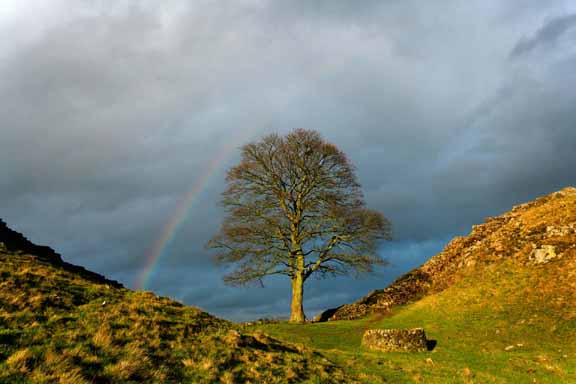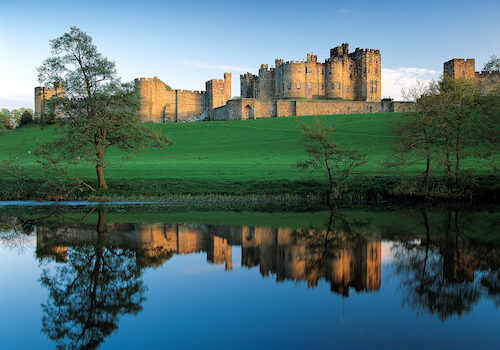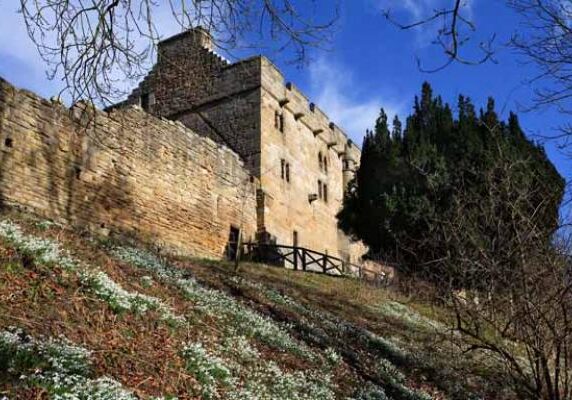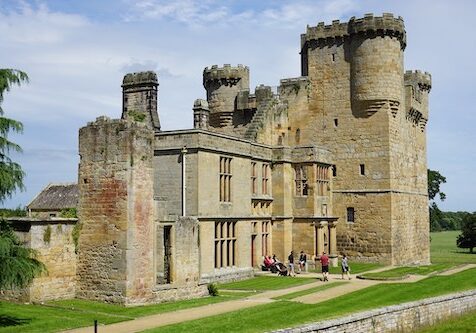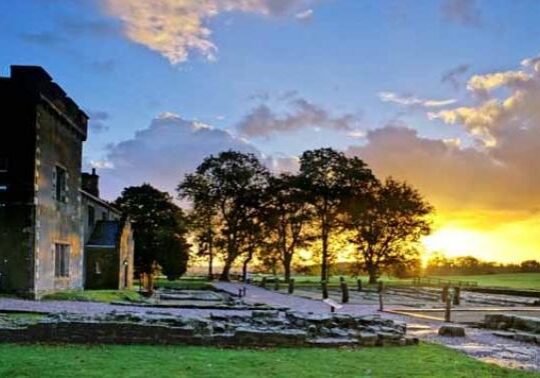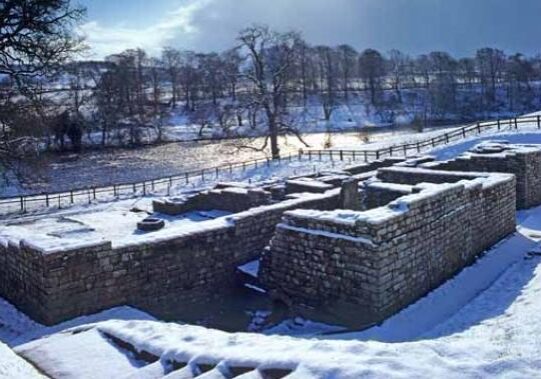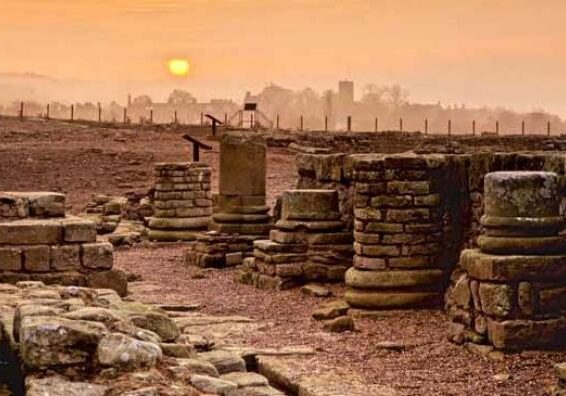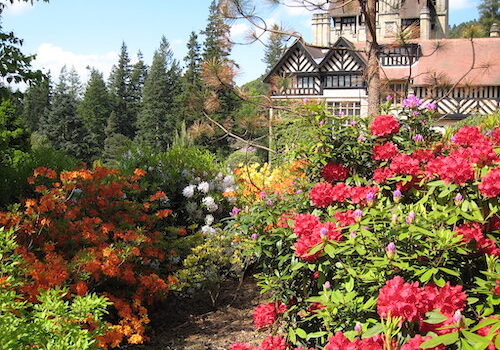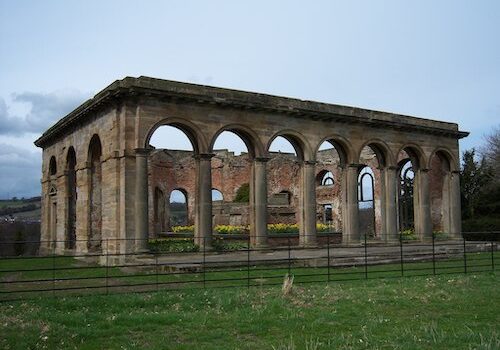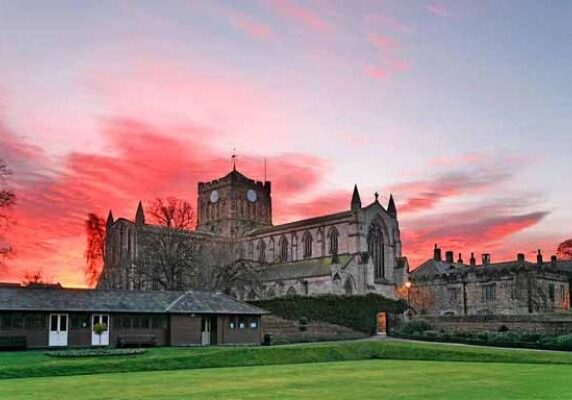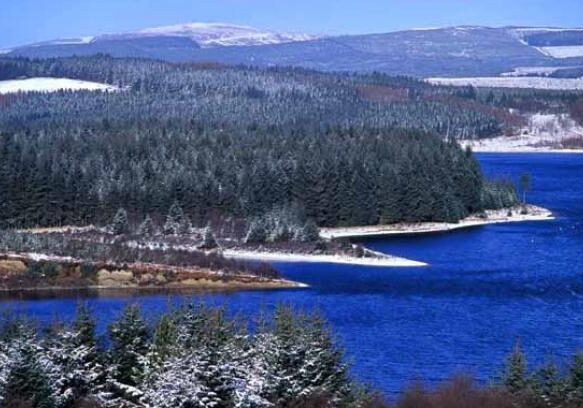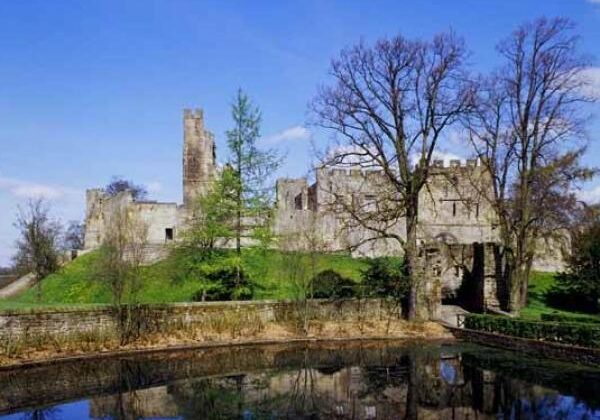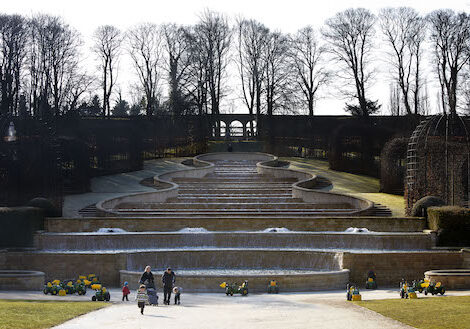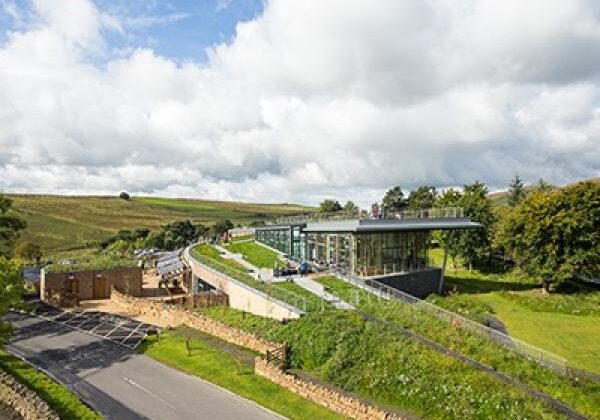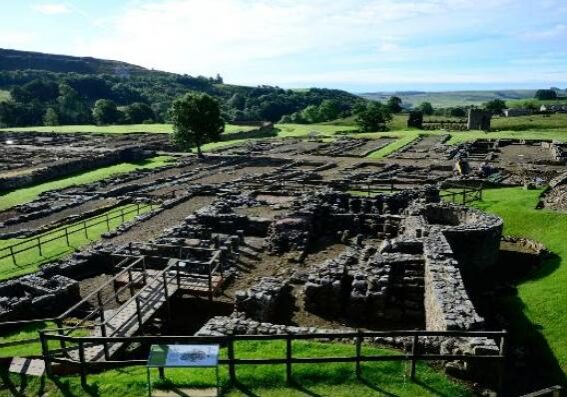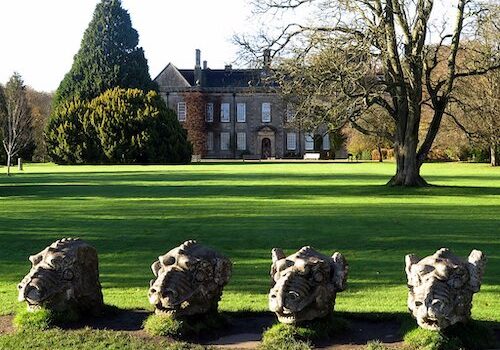Hadrian's Wall and surrounding area
Welcome to the beautiful and historic County of Northumberland and Hadrian’s Wall Country.
Northumberland is “England’s Border Country”, a stunning region of country walks and strolls along a picturesque coast, a land of history and heritage around every corner, a friendly county of country pubs and charming cottages.
Carraw Farm is situated on the Northern frontier of the Roman Empire, within Northumberland National Park. Spread over the hills and valleys at the very top of England, but right in the centre of Britain, Northumberland National Park has unspoilt treasures awaiting your discovery. Ancient pre-history and the rare red squirrel exist alongside traditional lifestyles with a thriving culture.
There are distinct characteristics within the landscape of the National Park. To the north there are the breathtaking rolling moors and grasslands of the The Cheviots, with their ancient hillforts and pure rivers. In the centre is Rothbury and Coquetdale with the landmark Simonside Hills and the beautiful villages of Harbottle and Holystone. To the west are the valleys of the North Tyne and Redesdale, wild, inspiring and once home of the Border Reivers and still inhabited by red squirrels. In the south is the iconic ridge of the Whin Sill with Hadrian’s Wall striding along its crest.
There are so many ways of experiencing the special qualities of the National Park. Whether you want to be Active, are looking for Culture or just want to experience the Natural Environment on offer, the National Park has it all.
If you are looking for a relaxing or active break at any time of the year in England’s Border Country, Carraw Farm is ideally situated to meet your needs. We will make you very welcome and ensure your stay is memorable.
Local Attractions
There are so many wonderful places to visit here in Northumberland. Here are a few.
A magnificent border fortress dating back to the 11th Century, extensively restored by Robert Adam in the mid 19th century with its riverside setting landscaped by Capability Brown. It is the ancestral home of the Dukes of Northumberland, the Percy family, the largest landowners in the County, who have lived here since 1309. The Percy’s organised many of the defences against Scots raiding parties in the days of the Border Reivers. More recently the Castle has appeared as the famous school, Hogwarts, in the Harry Potter films.
Telephone: 01665 510777
Tucked away just one mile from the village of Corbridge is Aydon Castle, the perfect location for a family day out.
Almost completely intact, it is one of the finest and most unaltered examples of a 13th century English manor house. Set in a beautiful and secluded Northumberland woodland, it was originally built as an undefended residence, but almost immediately fortified on the outbreak of Anglo-Scottish warfare. Nevertheless it was pillaged and burnt by the Scots in 1315, seized by English rebels two years later, and again occupied by Scots in 1346.
Telephone: 01434 632450
Lose yourself at Belsay with its unique combination of Grecian architecture, medieval ruins, formal terraces and lush jungle-esque Quarry Garden. Soak up the sights and smells of our Grade 1 listed gardens, roam the fabulous pillars in the grand hall, and enjoy wonderful views from the top of the castle tower.
Once you’ve worked up an appetite you can rest your legs in the tempting Victorian tearoom.
Telephone: 01661 881636
Birdoswald Roman Fort is the perfect place to see the longest continuous remaining stretch of this magnificent World Heritage Site, Hadrian’s Wall. Explore the extensive remains of the Roman fort and discover interactive displays, artefacts and a model of the wall in our fascinating exhibition. With delicious locally made cakes and treats in the tearoom, it is the ideal place to stop and relax while walking or cycling along Hadrian’s Wall in Cumbria.
Telephone: 01697 747602
Come and see what life was like at one the Roman Empire’s most northern outposts. Chesters Roman Fort is the most complete Roman cavalry fort in Britain – wander around the unusually well-preserved baths and steam room, and the officers’ quarters. Discover an amazing collection of Roman objects and inscriptions in our museum, these were found at the fort and along Hadrian’s Wall.
Telephone: 01434 681379
Not all the sites on Hadrian’s Wall were heavily guarded fortresses. Corbridge was a bustling town and supply base where Romans and civilians would pick up food and provisions. Today, you can still walk through the town’s streets and experience a time-capsule of Roman life. See Roman armour and trinkets, part of the Corbridge Hoard found here and gain a fascinating insight into the life of a soldier on the Wall.
Telephone: 01434 632349
Enter the world of Lord Armstrong – Victorian inventor, innovator and landscape genius. Cragside house was truly a wonder of its age.
Discover the first house in the world to be lit by hydroelectricity. It is crammed full of ingenious gadgets – most of them still working. The gardens are incredible. One of the largest rock gardens in Europe leads down to the Iron Bridge, which in turn leads to the formal garden. Children will love our adventure play area and exploring Nelly’s Labyrinth, a network of paths and tunnels cut out of a vast area of rhododendron forest.
Telephone: 01669 620333
Gibside is a Georgian ‘grand design’ on a spectacular scale. The vision of coal baron George Bowes, the Palladian chapel is an architectural masterpiece, the stable block is a vibrant learning and discovery centre, and the once grand hall is now a dramatic shell. Gibside is also a haven for wildlife with red kites often circling in the skies above.
After centuries of decline, the National Trust are restoring Gibside for people and nature. Escape along the avenue for miles of tranquil walks and picnic spots or enjoy family fun at the adventure play area and woodland play trail.
Food also runs through Gibside’s veins, whether in the bustling walled garden, cafe, local farm shop or twice monthly farmers’ market.
Telephone: 01207 541820
There has been a church on this site over for 1300 years since Queen Etheldreda made a grant of lands to Wilfrid, Bishop of York c.674. Of Wilfrid’s Benedictine abbey, the Saxon crypt and apse still remain. In Norman times an Augustinian priory replaced Wilfrid’s abbey: the church you see today is mainly that building of about 1170-1250, in the Early English style of architecture. The choir, north and south transepts and the cloisters, where canons studied and meditated, date from this period. The east end was rebuilt in 1860 and the nave, whose walls incorporate some of the earlier church, was built in 1908. In 1996 an additional chapel was created at the east end of the north choir aisle. Named ‘St Wilfrid’s Chapel’, it offers a place for prayer or quiet reflection. Since the Dissolution of the Monasteries in 1537 the Abbey has been the parish church of Hexham and today is still a centre for worship and witness to the Christian faith.
Telephone: 01434 602031
Hexham Tourist Information Centre is the best place to find information on Hadrian’s Wall, attractions, events, eating out, accommodation, walks, and much more, covering Tynedale, North East England and the rest of the country. Gift and book sales available.
E-mail: hexham.tic@northumberland.gov.uk. Telephone: 01670 620450
Carlisle stands proudly on the English and Scottish borders and blends its unique and colourful heritage perfectly with all the attractions and amenities of a modern, vibrant city. Shopping is a must with an array of high street names and specialist shops all contained in a traffic-free environment. Carlisle also occupies a unique position as the gateway city to the western stretch of the 85-mile long Hadrian’s Wall, World Heritage Site.
Set high on a dramatic escarpment on Hadrian’s Wall World Heritage Site, Housesteads Roman Fort takes you back to the Roman Empire. Wander the barrack blocks and the hospital. Peer into the oldest toilets you’ll ever see, and admire the stunning panoramic views from this ancient fortress. Our interactive museum showcases objects once belonging to Roman soldiers, and the mini-cinema will take you on a journey through time.
Telephone: 01434 344363
With a 27-mile shoreline, Kielder Water is the largest man-made lake in Western Europe.
The lake sits deep within the massive Kielder Forest, Britain ‘s largest forest, which covers an area of over 230 square miles. Predominantly Sitka and Norway Spruce, the forest is currently being restructured to include a wider range of species including many more broadleaf trees.
Hills, rivers and open areas add to the diversity of the forest, which is one of the few places in England, which is still home to native red squirrels.
Walking, cycling and horse riding are all well catered for in the forest. An interesting 13-mile Forest Toll road connects Kielder Village at the head of the reservoir to Byrness on the A68. A range of activities including sailing and other watersports, fishing and a ferry cruiser enhances Kielder’s quiet beauty.
Newcastle and Gateshead is a mix of the modern and historic, renowned for its excellent shopping and amazing nightlife. But Newcastle and Gateshead has much more to offer – explore the beautiful architecture including the ancient city walls and castle; enjoy the stunning quayside with its waterfront bars and galleries; and don’t miss the fantastic public art such as the Angel of the North.
The North Pennines is one of the largest and most recent parts of England to be officially declared an “National Landscape”.
It spans three counties: Northumberland (to the south of Hexham), Durham and Cumbria and comprises magnificent moorlands, wooded valleys and small, unspoilt villages. The central uplands are the source of many of the North of England’s best known rivers: The Tyne, Wear and Tees and waterfalls and gurgling streams are plentiful.
There are three main valleys of the North Pennines in Northumberland. These are South Tynedale which reaches from the market town of Haltwhistle to the Cumbrian town of Alston, the highest market town in England; Allendale with its centre at Allendale Town and its fascinating lead mining history remembered in the moorland village of Allenheads; and the Derwent Valley which forms part of the border with County Durham and where Blanchland, one of the most attractive villages in Northumberland, can be found.
Prudhoe Castle has many a story to tell so a family day out to this Northumberland fortress is truly worthwhile.
Continuously occupied for over nine centuries it was originally the home of the Umfravilles but was eventually taken over by the famous Percy family who restored it. Surviving two sieges during the 1170s , Prudhoe was the only Northumberland castle to resist the Scots. Visit the family-friendly exhibition to find out all about these developments and more about this long-lived fortress.
Have a picnic and take in the surroundings, browse in the shop or explore the keep, great hall and towered walls enclosing a fine Georgian mansion.
Telephone: 01661 833459
One of the most exciting contemporary gardens to be developed in the last century, The Alnwick Garden, a charity, is a living landscape of ideas and opportunities for people, stimulating cultural change. Designed by Wirtz International, the Alnwick Garden project has transformed a derelict plot to an exciting scene that dances with water and rings with the sounds of life, 364 days a year. The Garden’s design is a fascinating combination of quiet and busy spaces, supported by strong green structures. The Alnwick Garden has been created with children in mind and lots of the water can be played in.
Telephone: 01665 511350
Adjacent with the Scottish Borders to the north and the North Sea to the east, the 100 mile long Northumberland Coast is a designated National Landscape, sweeping from the historic town of Berwick upon Tweed in the north, to the village of Tynemouth with its golden sands and rolling surf, in the south.
Much of the area is unpopulated, tranquil, with mile-after-mile of clean and safe award-winning golden sandy beaches, quiet country lanes and an unequalled sense of freedom.
The Northumberland Coast has much to offer all visitors, including Dramatic Castles, such as Holy Island Castle, Bamburgh Castle, and Dunstanburgh Castle; traditional seaside towns, charming villages and hamlets, majestic Holy Island (accessible via a 3 mile long causeway at low tide), the Farne Islands and Coquet Island.
The Old Gaol was ordered to be built in June 1330, making it the oldest purpose-built prison in England. Prisons existed before this, but were generally adapted from buildings originally used for other purposes.
The Sill: National Landscape Discovery Centre, Northumberland National Park’s brand new visitor attraction will excite and inspire people of all ages to explore the landscape, history, culture and heritage of Northumberland.
The Sill will feature exhibitions, learning and event spaces, a local food café, and a shop specialising in local crafts and produce.
Telephone: 01434 341200
Near Carrawburgh fort (and Carraw) stands a fascinating temple to the eastern god Mithras, with facsimiles of altars found during excavation. Sited like many Mithraic temples near a military base, it was founded in the 3rd century, and eventually desecrated, probably by Christians. Nearby, but no longer visible, was the shrine of the water nymph Coventina.
Fort and civilian settlement with ongoing excavations and a full size reconstruction of a section of Hadrian’s Wall in both turf and stone. The superb museum has rare Roman writing tablets including an invitation to a party, which was voted by the public as the number one treasure from Britain’s past in the British Museum.
Telephone: 01434 344277
You can explore the history of Northumberland in huge pre-Raphaelite paintings around the Central Hall or take time to discover the beautiful furniture, treasured collections and quirky curiosities in each room.
The Trevelyans loved being outdoors and close to nature. The house is surrounded by an informal landscape of lawns, lakes, woodland, parkland and farmland, just waiting to be explored.
Don’t miss the hidden walled garden, nestled in the woods. Enter through Neptune’s Gate, sweep down the stone staircase, by the Mary Pool and soak up the tranquil atmosphere. Wander past colourful borders and enjoy the scent of the flowers in the Edwardian conservatory.
Enjoy wild play in the West Wood with our three play areas, visit our family-friendly wildlife hide and look out for red squirrels, stroll by the river or refresh your mind among the flowers.
Telephone: 01670 773967

